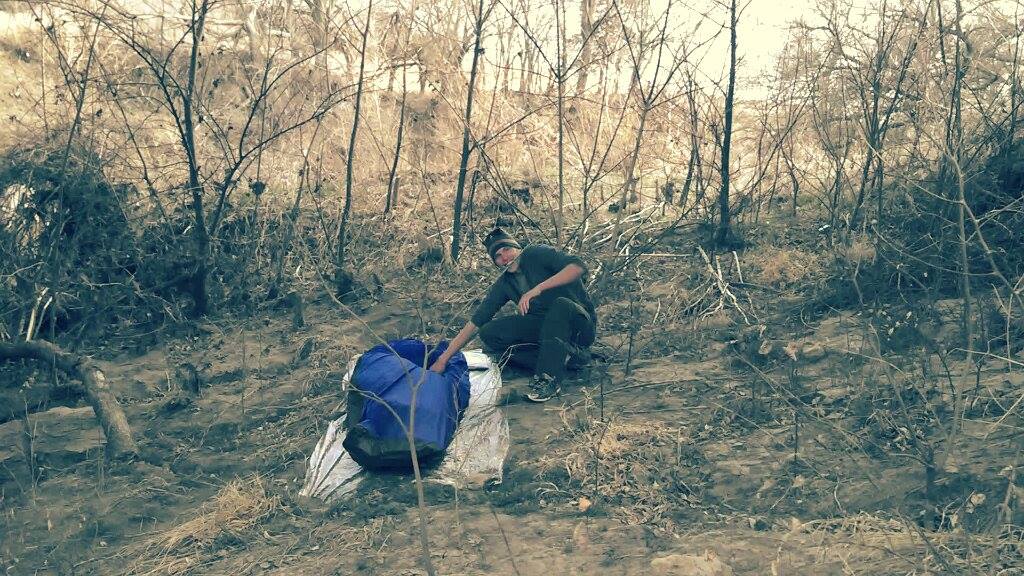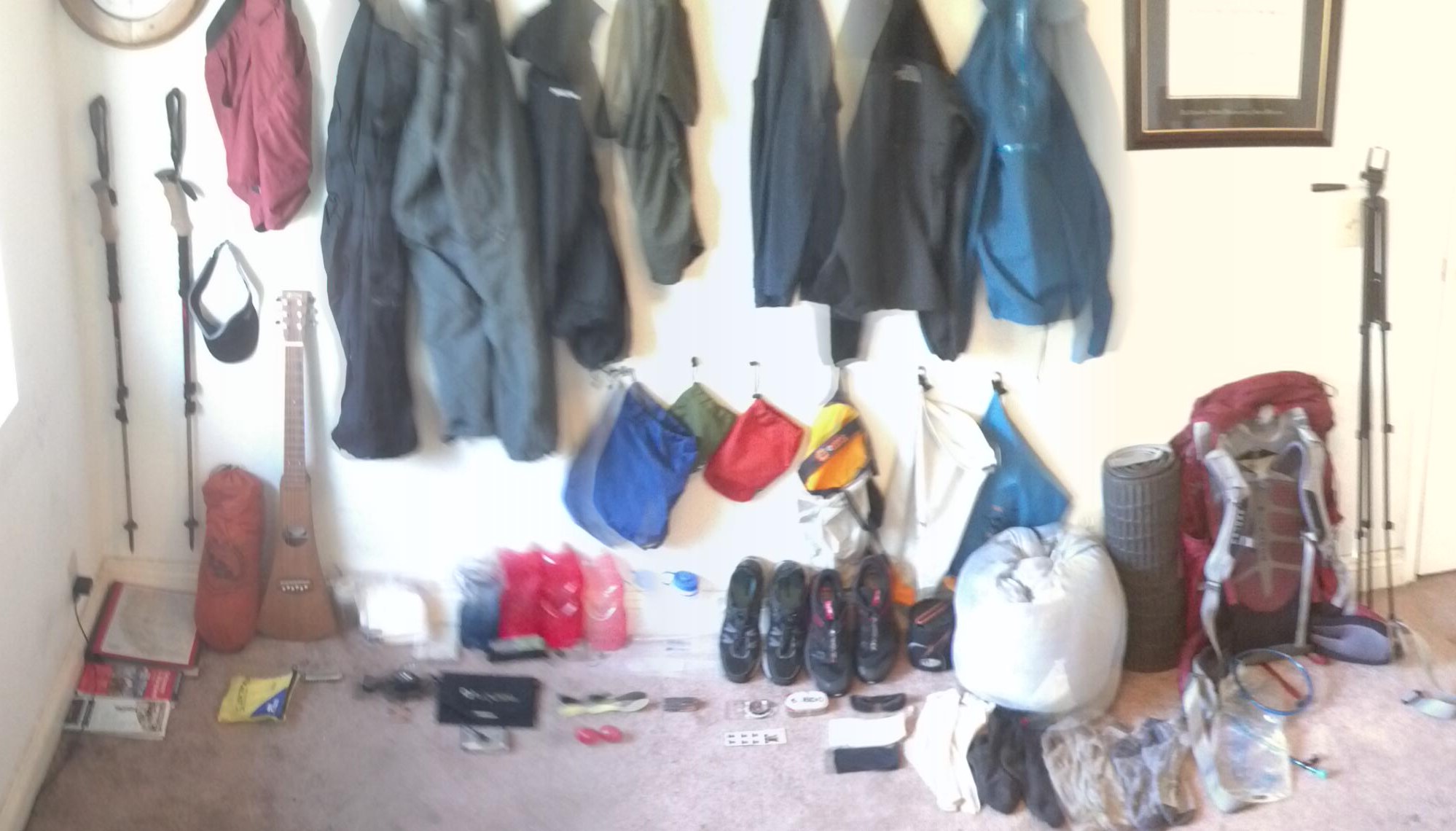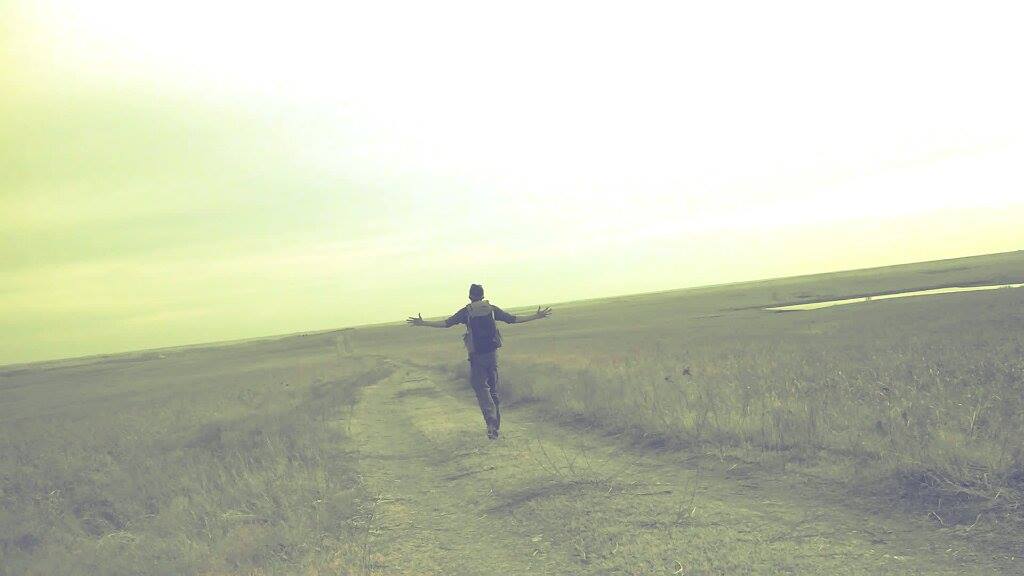Introduction
My name is Edward Mjelde, I am a 24 year old recent college graduate from sunny San Diego, California.
This is my story about how I gave away and sold nearly all my possessions and left home with a backpack to walk coast-to-coast across the country following the 5,100 mile American Discovery Trail in pursuit of beauty, truth, and a life of risk and adventure.
My goal is to share the knowledge I have gathered from my adventure in hope that it will inspire people to take risks in order to chase their own dreams and aspirations.
I have dubbed my epic adventure as WalkUSA, ”A Walk to Discover America and its People”.
Catch a glimpse of what it’s like walking across America with the first video compilation of my adventure!
Current Article Summary
In this article I will be discussing lightweight backpacking and give tips on how you can reduce your pack weight by removing items you can do without, reducing the three heaviest backpacking systems, and considering dual use of equipment.
Previous Article Summary
In my previous article I explained the steps I took to prepare and educate myself about backpacking and share the incredible stories of the people who helped me figure out what to expect when attempting a trip across the country. Interested in some of the sources I used to learn lightweight backpacking techniques and philosophy?
Why go Lightweight?

There are many reasons to go lightweight, here are some that come to mind:
Longer distances
Faster Travel
Less fatigue/ Fewer injuries
Greater free range of mobility
Comfort
Simplicity
Stronger connection with nature
People may be turned off by the idea of backpacking due to negative thoughts about the burden of a heavy pack. When buying backpacking gear major outlets will encourage you to buy items as a “must have” in your backpacking kit, which are simply not necessary.
You have the ability to obtain all the benefits above while still traveling in safety and comfort, the secret is in learning a few skills and understanding optimal uses and limitations of the gear you carry.
What is Light Weight Backpacking?

Lightweight backpacking is about building the lightest and simplest backpacking system that is safely possible for a given trip.
In discussing the weight of a kit, backpacker’s use the term “base weight” to describe a bags weight with all equipment without counting in food, water, and fuel. In traditional backpacking its not uncommon to see base weights over 30 pounds. Lightweight base weights are below 20 pounds and ultralight kits are under 10 pounds.
Today there is an ongoing lightweight and ultralight movement that was largely popularized by climber Ray Jardine in the 90’s who laid the initial foundations for the techniques that lightweight backpackers use today. More recently, hikers like Andrew Surka and Ryan Jordan have dove even deeper into the discipline and philosophy, writing books and initiating discussion amongst groups of hikers who together are continuing to take lightweight backpacking down to a science.
There are a number of manufactures who are starting to come on board to supply lightweight and ultralight gear. Some larger suppliers for example are Golite and Gossamer Gear who develop lightweight and ultralight backpacking solutions and a wide variety of cottage manufactures like Zpacks who design and distribute lightweight tarps and backpacks.
Large box retailers are starting to catch on to the demand as well. REI is starting to introduce lighter gear, many that have been given the title of “ultralight”, although much of their assortment is still embellished with comfort features that place the equipment away from the core of minimalist gear. However, it is a step in the direction and I wouldn’t be surprised to see further steps in the future.
Where To Begin?
Lose Items You Can Do Without

Do you need that camp chair? Do you need all that extra clothing? Do you need dishes and a full utensil kit? Do you know how to use all the items in your first-aid kit? Do you need that extra pair of shoes? Removing unnecessary gear is a great first step in lightening your backpacks load.
For example instead of carrying extra cloths, I take only what is necessary for the conditions I am expecting during my travels.
My clothing kit:
Smartwool Marino Wool Long Sleve (12oz)
Kuhn Liberator Convertible Pants (12oz)
Ecofficio Give and Go Boxers (3oz)
(2 pairs) Darn Tough Marino Wool Socks (5.8oz)
Baseball Cap (3oz)
Arc’teryx Alpha SL Pull Over Rain Jacket (13oz)
Marmot Preclip Full Zip Rain Pants (12oz)
Patagonia Houdini Wind Shirt (3.5oz)
Total Weight 64.3oz/4.02 pounds
This clothing system outlines all the clothing I bring, including what I wear, typcially for late winter/early spring weather. I have taken this clothing system into the 30’s and have been comfortable. In warmer weather I can travel with less. I carry a set of rain gear that is on the heavier side of things, but I enjoy being able to walk in comfort during storms. Depending on your needs, you may be able to reach a weight much less that what I have posted here.
Choosing fibers that are naturally antibacterial, like Marino wool, can help minimalize odor. Clothing can also be cleaned along your travels if water is present. Choosing fast drying clothing makes this especially easy.
I have had some say to me “Traveling with one pair of boxers, that is disgusting!”. I argue that it is not, because I take the liberty to remain hygienic and to clean my cloths while I travel. Rinsing your cloths with just water, no soap, does a fairly good job at washing away the daily grime.
Leaving behind extra clothing is just one way to reduce your pack weight. Look at what you are carrying and identify unnecessary items, this is a great place to start in reducing the overall weight of your backpack.
Reduce The Big Three
There are three main systems that lightweight backpackers reduce in order to make the most substantial improvement in their pack weight. These are your shelter system, sleeping system, and backpack.
Shelter System
Do you need the double wall shelter on a three day trip with mostly sunshine and possibly a medium rain storm? Probably not.
Many lightweight backpackers decided to use tarps instead of fully enclosed tents. I enjoy tarps because they are more lightweight, consume less space inside my backpack, and produce better views than a fully enclosed tent which allows me to connect deeper with the area around me.

When using tarps as a shelter there are a few skills that are required in order to be prepared when you hit the trail such as practice in pitching the tarp, knowledge of a few knots, and proper campsite selection.
There are many articles online on these topics that can be brought up with a simple Google search and if you stay tuned to my series I’ll be covering this information. If you would like to know more about various light weight shelter options check out the following article I wrote which describes some of the popular choices that are available.
Sleeping System
To reduce the weight of the sleeping system you may consider a down sleeping bag instead of heaver synthetic alternatives. Down is typically warmer, more compact, and lighter. One drawback is that they lose their loft when wet and can be hard to dry out. However, this draw back is starting to be reduced as new types of down, such as Downtek, become water resistant.
You may also consider using a quilt instead of a mummy bag to save weight. The logic is that when laying on the underside of the insulation of a sleeping bag you compress the material which loses its ability to trap the bodies head. Essentially the underside of a mummy bag becomes deadweight, a quilt covers only the top of the body to save from carrying the extra weight.

To insulate the underside of the body and to keep the ground from stealing your precious body heat, insulated foam or lightweight blow up pads can be used. There are many different options that come in different sizes and weights, and I believe that it is truly up to the user preferences on what system they choose. I personally use a Neoair ThermoRest blow-up (16oz) and couldn’t be happier with my sleep. The pad has last me beyond a thru-hike and still continues to serve me without any problems.
Backpack
Once when you start omitting unnecessary items and reducing items weights, you will start to find that you need less space and less support in your backpack. No longer do you need to haul a 6-pound- bomb-proof back with hip belt stabilizers, lifter straps, and sternum straps.
In fact, if you get your pack weight down enough (base weight below 15 pounds) you may be able to find it comfortable using a bag that has no support system, where instead you can use your sleeping pad in what they call a “virtual frame “. However be weary, loads that exceed 20 pounds without a frame can become uncomfortable.
Before making a selection on your backpack understand what you will be carrying first. A rule of thumb is to avoid buying a pack that is under 16oz, frame or frameless. A bag that is at comes in at this weight may be impractical for carrying proper amounts of food and that its fabrics may not have the seam strength that is durable enough to take practical loads.
I use the Gossamer Gear Gorilla Ultralight Backpack, which I find very comfortable. It has a total of 46L capacity and weighs in at 28oz.
Dual Use
Another important aspect of lightweight backpacking is considering what items you can take that serve more than one purpose to save weight.

A popular example is the Poncho tarp, a tarp tent that can also be used as rain gear. Also, many people who use tarp tents also use their trekking poles to pitch their tarps so they do not have to carry poles. Some people like to use emergency Mylar blankets as ground sheets for their tarps as well (though some complain of its sound and durability).
Conclusion

Having a lighter backpack can help lead to a more wholesome experience while backpacking. To reduce your backpack it is important to limit the unnecessary items that you carry, reduce the weight of your shelter, sleeping, and backpack systems, and consider the dual use of the items you carry. Using these tips you can dramatically reduce the weight of your backpack. Through knowing your gear and it’s limitations you can safely travel lighter without reducing your comfort or safety.




